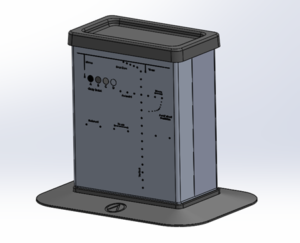A Novel Approach to Designing a Tissue-Mimicking Ultrasound Phantom
Wayne Moore
10/11/2022
Ultrasound phantoms have been around since commercially available ultrasound systems were introduced. Early phantoms were designed to verify accurate spatial geometry of embedded targets to ensure that the analog scan converters in the ultrasound system were calibrated correctly – e.g., a round target was indeed being display on the ultrasound system as a round target. As ultrasound systems became more technologically sophisticated (e.g., the use of digital scan converters), the need to verify that phantom round targets appeared round on the system monitor was lessened. Also, both system and probe design benefitted from leaps in technology related to bandwidth and gray scale presentations (e.g., 256 levels of B-mode gray scale became the norm in 1983). Phantom design then shifted to using materials that could more appropriately represent human tissue – aka the creation of tissue-mimicking phantoms (TMP). Fast forward to 2022 and ultrasound systems and probes are an order of magnitude more complex than they were just twenty years ago: unfortunately, TMP design has stagnated during this same timeframe. Until now! In the coming weeks Acertara will be introducing its newly designed Advantage II TMP at the IEEE Ultrasonics Symposium, the MD Expo meeting, and at the RSNA. The design goal of Advantage II was a TMP that would accurately reflect (no pun intended) the advanced ultrasound technology used today in both systems and ultrasound probes. To demonstrate the superior image presentation of the Advantage II and a short training course on TMP use, we are also developing a video that will include some of the topics below.
What is an ultrasound tissue mimicking phantom (TMP) and who uses it?
- A test object containing Tissue Mimicking Material (TMM) that simulates certain acoustic and physical properties of human tissue
- May also contain various types of embedded reflective objects/targets to simulate various acoustic characteristics as shown below
- Used by the following personnel in the hospital as a quality or diagnostic tool to assess diagnostic ultrasound system and probe performance over time, or when a probe/system failure is suspected:
1) Sonographers
2) Medical Imaging Physicists
3) OEMs – Field Service Engineers
4) Hospital-based Clinical Engineers
5) Hospital-based Biomedical Engineers
6) 3rd Party Servicers
Examples of simulated acoustic properties of objects and/or targets embedded within a TMP:
1) Speed of Sound
2) Attenuation Coefficient
3) Backscatter Coefficient or Relative Contrast
4) Elasticity
5) Thermal Properties
6) Mechanical Properties
Other uses of TMPs in hospital-based evidence-based quality assurance include:
1) Equipment Selection
2) Product Acceptance Testing/Commissioning
3) IQ Consistency Checks; Is my system performing the same today as it did last Quarter?
4) Demonstrate compliance with various accreditation programs, such as:
1) ACR – American College of Radiology
2) AIUM – American Institute of Ultrasound in Medicine
3) The Joint Commission
We look forward to seeing you at one of the meetings mentioned above.
Until next month,

Wayne
Advantage II

